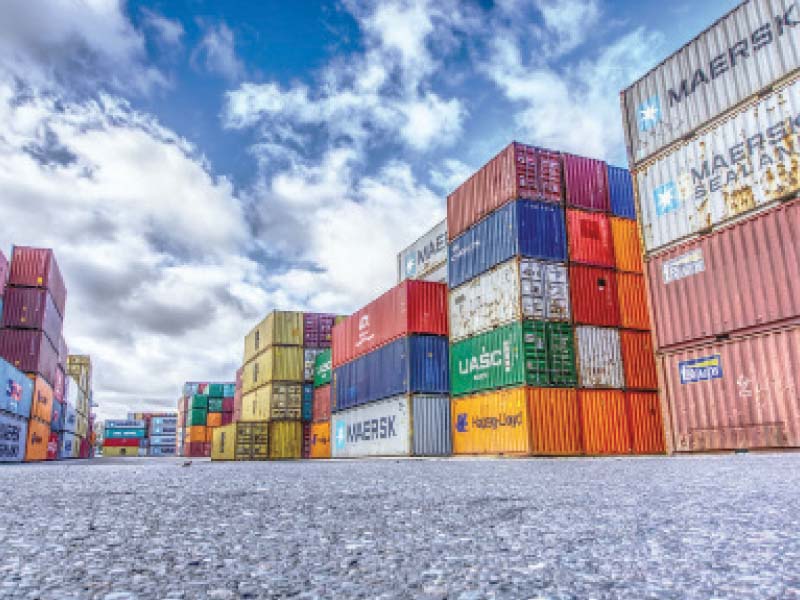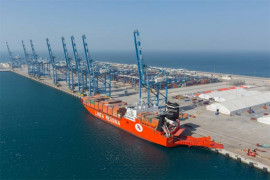
Pakistan’s exports rebounded to more than $2.3 billion in March 2021, an increase of 14.17% from $2.07 billion in February 2021, reported the Pakistan Bureau of Statistics (PBS).
Exports in March 2021 were almost 30% more than those reported in March 2020, when Covid-19 started making an adverse impact on shipments from Pakistan.
On the other hand, imports were reported at $5.6 billion in March 2021, which was $1 billion more than the value reported in February 2021. The month-on-month growth rate was 21.8% and the year-on-year growth rate was 70.25%.
Trade deficit for March 2021 came in at $3.27 billion, which was 118% more than the $1.5 billion reported for March 2020.
It is clear that both exports and imports are rising, with the latter growing faster than the former. Even though the resurgence of Covid-19 cases is expected to further exacerbate the challenges faced by the policymakers, the rebound suggests that economic conditions are improving.
The State Bank of Pakistan (SBP), which reports the inflow of export receipts and outflow of import payments, reported a 3.2% positive growth in the monthly export receipts and 1.8% positive growth in the monthly import payments in February 2021.
Read: Exports over $2b for sixth successive month
The deficit in balance of trade was $16 billion between July 2020 and February 2021 compared to $13.2 billion in the same period of previous fiscal year.
The index for the production of selected large-scale manufacturing items is showing an upward trend. Data extracted from the SBP shows a 7.85% increase in the first seven months of FY21. It was negative 3.19% in the same period of previous fiscal year.
Export-oriented industries such as textile and food, beverages and tobacco are reporting positive growth. The latter is driven by the increase in production of sugar.
Industries dependent on imported inputs such as chemicals, automobiles and pharmaceuticals are also reporting positive growth.
The auto sector is reporting a sharp turnaround from the poor conditions in the previous fiscal year as it grew 13.02% compared to a decline of 36.9% in the previous fiscal year. The increase in auto production is driven by the rise in production of cars, jeeps, motorcycles and tractors.
Furthermore, the rupee was reported to be the best performing currency in the world in the first quarter (Jan-Mar) of 2021. It strengthened more than 4% in the first three months, ranking above the Canadian dollar and the pound, which appreciated less than 1.25% in the same time period.
Though the sudden appreciation of the rupee can help reduce the impact of inflation and contain the rise in prices of imported goods, it can dent competitiveness of exporters. This is particularly crucial as Pakistani policymakers strive to increase exports from the country.
It is also important to note that Pakistan’s exports are concentrated in less complex products that are often sensitive to price changes. This is often highlighted by fluctuations in unit values and profit margins as exporters may struggle to fetch the best price for their output.
It is essential that the value of the rupee stays within market expectations and volatility is minimised to ensure sustainable export growth.
Trade with India
In recent days, Pakistan-India trading relationship has again come under spotlight. Pakistan was expected to import sugar, cotton and cotton yarn from India in order to bridge the shortfall in domestic market. However, the plan was later shelved by the federal cabinet.
According to data of ITC’s Trademap.org, Pakistan imported $1.94 billion worth of goods from India in 2018, making it the eighth largest source of imports.
The figure decreased to $1 billion in 2019 after sanctions were imposed on trade by the two countries. India became the 11th largest source of imports into Pakistan.
In 2018, Pakistan imported $345 million worth of raw cotton from India. This decreased to $54 million in 2019, a significant drop given the fact that the production of cotton in Pakistan was decreasing.
However, exports of raw cotton from India also decreased by more than 50% between 2018 and 2019. According to Statista, there was a decline in production of cotton in India in the last two fiscal years. On the other hand, the share of cotton yarn increased in imports into Pakistan from India.
The Economic Coordination Committee (ECC) was planning to import 500,000 tons of sugar from India. The resumption of trade between Pakistan and India is likely to be crucial if Pakistan is to participate in regional and global value chains and push export growth.
Products that were frequently traded between the two countries before the trade sanctions must be prioritised as the trading relationship moves towards normalisation.
This leads to the broader question on how the lack of ability to develop good trading relationship with several countries may have hurt Pakistan as it struggles to procure vaccines to ensure sufficient supplies.
Read more: Pakistan’s imports soar, exports drop in February
Vaccine nationalism
According to statistics provided by Statista, vaccine nationalism observed in the developed world as well as by major producers is likely to impact efforts to stem the spread of Covid-19 globally.
The United States and the United Kingdom had not exported a single dose of the vaccine as of March 2021. China exported 48%, EU exported 46% and India exported 44% of its production.
However, the EU is likely to initiate measures that account for proportionality and reciprocity such that it exports to countries that themselves do not impose a ban.
Once the ongoing third wave of coronavirus subsides and the availability of vaccines increases across the globe, major economies are likely to make strides to catch up with the lost economic activity.
Debates on reallocation of resources to the most productive activities and structural transformation will re-emerge. Pakistan too will need to consider its growth strategies.
The writer is a PhD in International Economics
Published in The Express Tribune, April 12th, 2021.
Like Business on Facebook, follow @TribuneBiz on Twitter to stay informed and join in the conversation.
























COMMENTS
Comments are moderated and generally will be posted if they are on-topic and not abusive.
For more information, please see our Comments FAQ